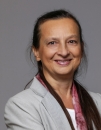Computer Animation
Data is displayed for academic year: 2023./2024.
Lecturers
Laboratory exercises
Course Description
This course will survey fundamental and advance topics of three-dimensional object representation and rendering required in computer animation applications. It is aimed to deepen the understanding of position and orientation interpolation as well as representation of complex hierarchical kinematic and dynamic structures. Topics include recent techniques such as: parallax occlusion, bump mapping, real time collision detection and physically based computer graphics and animation techniques.
Study Programmes
University graduate
[FER3-HR] Audio Technologies and Electroacoustics - profile
Elective Courses
(1. semester)
(3. semester)
[FER3-HR] Communication and Space Technologies - profile
Elective Courses
(1. semester)
(3. semester)
[FER3-HR] Computational Modelling in Engineering - profile
Elective Courses
(1. semester)
(3. semester)
[FER3-HR] Computer Engineering - profile
Elective Courses
(1. semester)
(3. semester)
[FER3-HR] Computer Science - profile
Elective Courses
(1. semester)
(3. semester)
Elective Courses of the Profile
(1. semester)
(3. semester)
[FER3-HR] Control Systems and Robotics - profile
Elective Courses
(1. semester)
(3. semester)
[FER3-HR] Data Science - profile
Elective Courses
(1. semester)
(3. semester)
[FER3-HR] Electrical Power Engineering - profile
Elective Courses
(1. semester)
(3. semester)
[FER3-HR] Electric Machines, Drives and Automation - profile
Elective Courses
(1. semester)
(3. semester)
[FER3-HR] Electronic and Computer Engineering - profile
Elective Courses
(1. semester)
(3. semester)
[FER3-HR] Electronics - profile
Elective Courses
(1. semester)
(3. semester)
[FER3-HR] Information and Communication Engineering - profile
Elective Courses
(1. semester)
(3. semester)
[FER3-HR] Network Science - profile
Elective Courses
(1. semester)
(3. semester)
[FER3-HR] Software Engineering and Information Systems - profile
Elective Courses
(1. semester)
(3. semester)
[FER2-HR] Computer Science - profile
Specialization Course
(1. semester)
(3. semester)
[FER2-HR] Information Processing - profile
Recommended elective courses
(3. semester)
Learning Outcomes
- explain, modify and apply object position and orientation
- apply mathematics, physics and computer programming to computer graphics applications and problem solutions.
- demonstrate methods for collision detection
- explain methods for rough surfaces rendering
- develop and create short 3D animations
- combine various elementary animation concepts in more complex animation
Forms of Teaching
Lectures
The lectures take place live in Croatian and were recorded and posted on the youtube list: https://www.youtube.com/playlist?list=PLNHq5F4gHyqgb9jSh-H_HAKmJaNldlkYN Course Web page: http://www.zemris.fer.hr/predmeti/ra/index.html
Partial e-learningThe course uses e-learning.
Independent assignmentsEach student also makes an independent practical task in the form of a seminar.
Multimedia and the internetMultimedia and network are used.
LaboratoryThe lab is done in a faculty lab or through MSTeams.
Grading Method
| Continuous Assessment | Exam | |||||
|---|---|---|---|---|---|---|
| Type | Threshold | Percent of Grade | Threshold | Percent of Grade | ||
| Laboratory Exercises | 50 % | 15 % | 0 % | 0 % | ||
| Class participation | 0 % | 5 % | 0 % | 0 % | ||
| Seminar/Project | 50 % | 15 % | 0 % | 0 % | ||
| Mid Term Exam: Written | 0 % | 30 % | 0 % | |||
| Final Exam: Written | 0 % | 35 % | ||||
| Exam: Written | 50 % | 50 % | ||||
| Exam: Oral | 50 % | |||||
Week by Week Schedule
- Splines
- Splines
- Data structures for rotations (such as quaternions)
- Data structures for rotations (such as quaternions)
- Motion capture
- Forward and inverse kinematics
- Forward and inverse kinematics
- Midterm exam
- Physics based motions, Physical particle systems; Mass-spring networks for cloth and hair
- Physical particle systems; Mass-spring networks for cloth and hair
- Bidirectional Scattering Distribution function (BSDF) theory and microfacets, Non-photorealistic rendering
- Collision detection and response
- Visualization of 2D/3D scalar fields (color mapping, isosurfaces)
- Direct volume data rendering (ray-casting, transfer functions, segmentation)
- Final exam
Literature
John F. Hughes, Andries Van Dam, Morgan McGuire, David F. Sklar, James D. Foley, Steven K. Feiner, Kurt Akeley (2019.), Computer Graphics,
For students
General
ID 222678
Winter semester
5 ECTS
L1 English Level
L2 e-Learning
30 Lectures
3 Seminar
0 Exercises
10 Laboratory exercises
0 Project laboratory
0 Physical education excercises
Grading System
Excellent
Very Good
Good
50 Sufficient


 Pristupačnost
Pristupačnost
